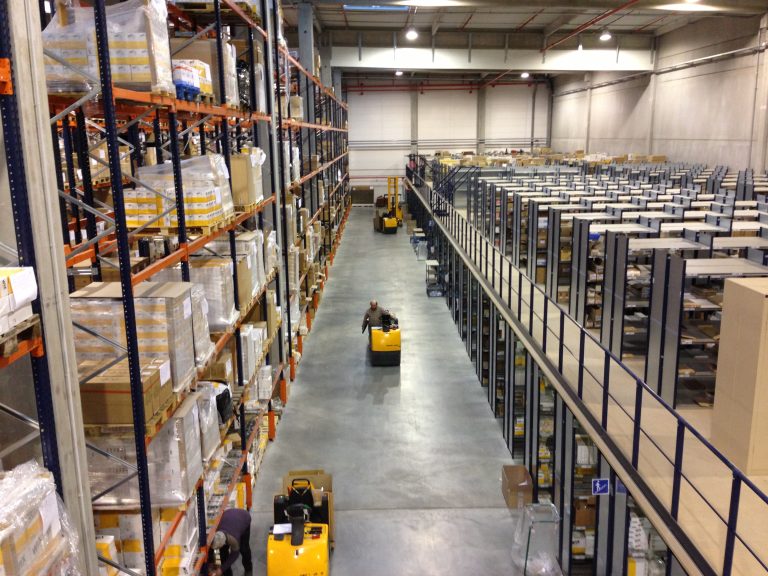
Just-in-Time and uncertainty: how to secure your supply chain in times of crisis?

Historically, the just-in-time (JIT) model has been the cornerstone of supply chain management, allowing companies to reduce costs and optimize processes by producing and delivering goods only when needed. However, recent unforeseen events, such as the COVID-19 pandemic, natural disasters, and geopolitical conflicts, have highlighted the vulnerability of this approach to unexpected disruptions. Therefore, to enhance supply chain responsiveness and ensure resilience, it is essential to rethink current strategies.
The limits of Just-in-Time: what risks does your supply chain face?
JIT is based on minimizing inventory and producing according to actual demand, which improves efficiency and reduces storage costs. However, this strategy presents risks in unstable environments. Dependence on a single supplier, lack of safety stock, and limited flexibility in the face of unexpected fluctuations can lead to severe supply chain disruptions.
For example, the pandemic impacted the availability of raw materials and key components, causing shortages and production delays across multiple industries. Additionally, geopolitical events, such as the Russia-Ukraine conflict, have demonstrated how a geographically limited disruption can destabilize global trade flows.
5 effective strategies to strengthen your supply chain resilience
To mitigate JIT vulnerabilities and enhance supply chain resilience, companies can adopt several strategies:
1. Hybrid models: combining Just-in-Time and Just-in-Case for greater flexibility
Just-in-case (JIC) is an inventory management model where large quantities of products are stored to prevent stockouts, complementing JIT by maintaining strategic reserves of essential items. Although this approach may increase storage costs, it provides greater flexibility in the face of unforeseen crises. The combination of both methods allows businesses to balance efficiency and responsiveness.
2. Digitalization and AI: anticipating risks and optimizing the supply chain
The use of artificial intelligence (AI), big data, and predictive analytics enhances supply chain visibility and helps anticipate potential disruptions. Digitalization enables more agile, data-driven decision-making, optimizing planning and resource allocation.
3. Supplier diversification and nearshoring: reducing dependency and securing supply
Reducing reliance on a single supplier or on suppliers located in distant regions is crucial for minimizing risks.
Strategies such as nearshoring (relocating production to nearby countries) can improve responsiveness and shorten delivery times. Companies have taken note of recent logistical crises and are rethinking their sourcing strategies, as relying on excessively long and dispersed supply chains has proven risky. In response, many businesses are moving production closer to their key consumer markets to enhance security, flexibility, and operational efficiency.
4. Automation and robotics: optimizing logistics processes
Implementing automated systems in warehouses and distribution centers can improve operational efficiency and reduce dependence on human labor during crises. Robots, automated order fulfillment systems, and autonomous vehicles are some of the solutions that streamline workflows.
5. Sustainable supply chains and circular economy: a lever for resilience and performance
Enhancing supply chain resilience also involves adopting sustainable practices. Reducing waste, reusing materials, and implementing circular economy models not only minimize operational risks but also improve brand reputation and regulatory compliance.
How ACSEP optimizes your supply chain with digitalization and automation
At ACSEP, as experts in supply chain digitalization and optimization, we offer solutions that help businesses enhance supply chain efficiency, reduce waste, reuse materials, and adopt circular economy models. This not only minimizes operational risks but also strengthens brand reputation and regulatory compliance.
With IzyPro, our warehouse management system (WMS), combined with our supply chain digital consulting services, ACSEP enables companies to adapt to market challenges and reinforce operational resilience.
Our clients’ success speaks for itself. La Pradera Online, for instance, developed its own software to handle multiple logistics operations, but its rapid growth made it impossible to sustain on its own. As a result, the company turned to ACSEP for a complete and standardized solution that would allow it to scale while maintaining quality, flexibility, and control. After implementing IzyPro in less than three months, Noelia García, founder of La Pradera Online, stated: “A company’s level of organization directly impacts the quality of service and customer experience. During the initial phase of a project, process organization and control can be relatively simple, but complexity increases exponentially as the project grows.”
While the just-in-time model has been an effective supply chain management strategy, growing uncertainty and the rapid evolution of today’s business environment require a reassessment of operational practices.
Thus, adopting hybrid approaches, integrating advanced technologies, and diversifying suppliers are key steps to improving responsiveness and ensuring more robust operations in the face of any challenge.
The key lies in balancing efficiency and flexibility, ensuring a supply chain that is ready to handle the unexpected.
Can we help you?



